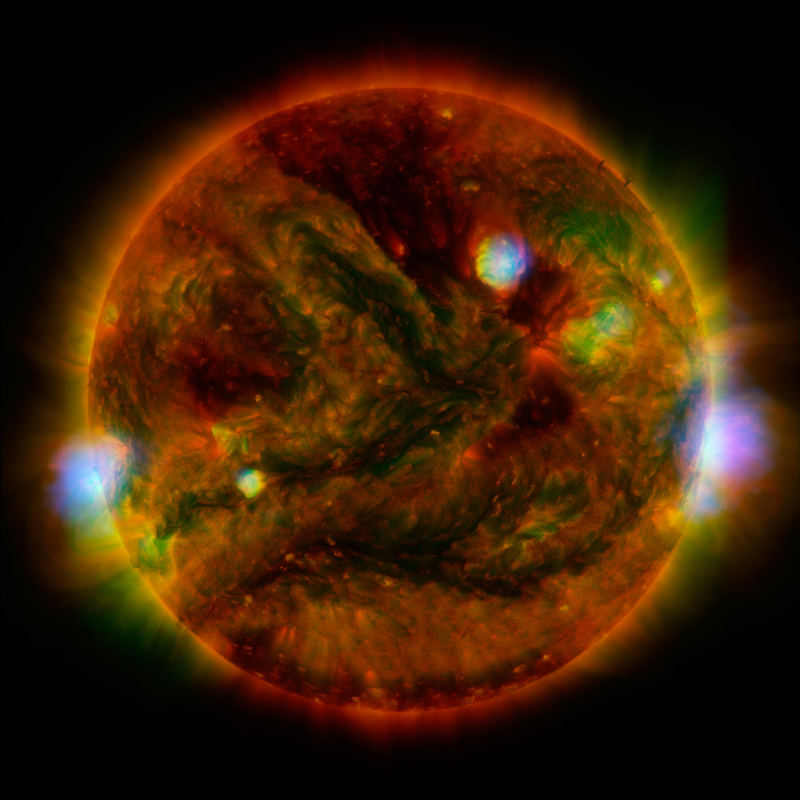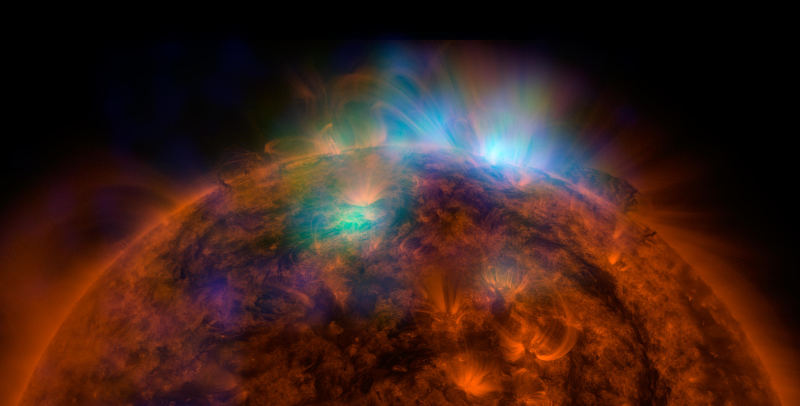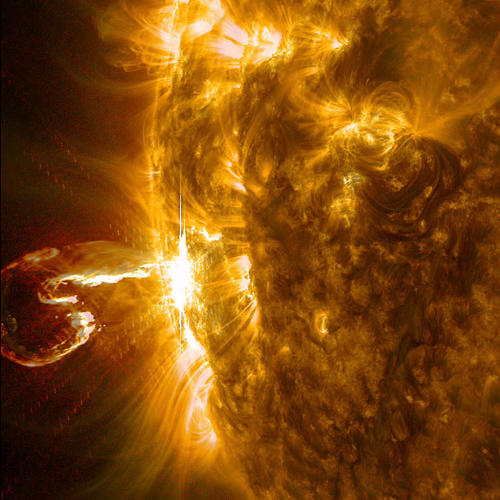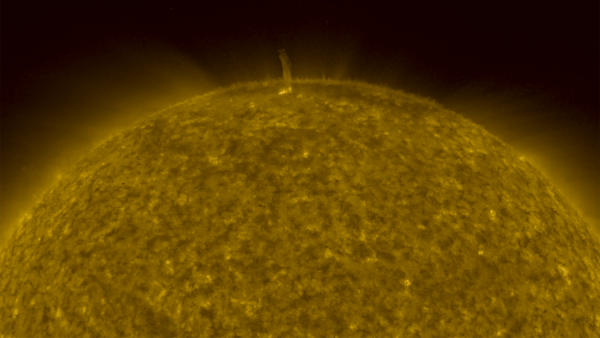
One shouldn’t stare at the Sun with the naked eye but its perfectly good to stare at this composite picture from several specialized telescopes (NASA’s Nuclear Spectroscopic Telescope Array; their Solar Dynamics Observatory and Japan’s Hinode spacecraft). The active regions across the sun’s surface contain material heated to several millions of degrees with the blue-white areas showing the most energetic spots with mini-flares being ejected.


